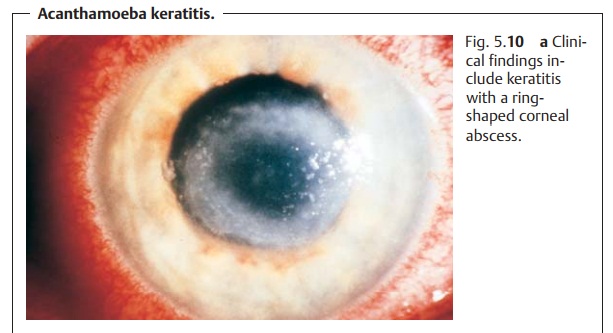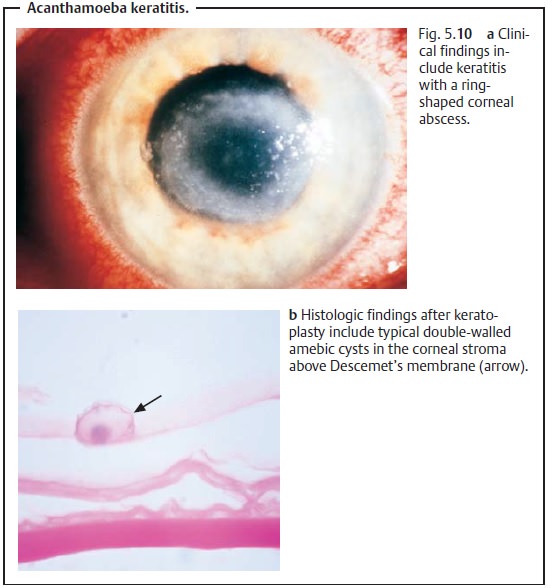Chapter: Ophthalmology: Cornea
Acanthamoeba Keratitis

Acanthamoeba Keratitis
Epidemiology:
This is a rare type of keratitis and one which may have
beendiagnosed too rarely in the past.
Etiology:
Acanthamoebais a saprophytic protozoon. Infections usually occurin wearers of contact lenses, particularly
in conjunction with trauma and moist environments such as saunas.
Symptoms:
Patients complain of intense pain, photophobia, and lacrimation.
Diagnostic considerations:
The patient will often have a history of severalweeks or months
of unsuccessful antibiotic treatment.
Inspection will reveal a unilateral reddening of the eye. Usually there
willbe no discharge. The infection can
present as a subepithelial infiltrate, as an intrastromal disciform
opacification of the cornea, or as a ring-shaped cor-neal abscess (Fig. 5.10a).

The disorder is difficult to diagnose, and
even immunofluorescence stud-ies in specialized laboratories often fail to
provide diagnostic information. Amebic cysts can be readily demonstrated only
by histologic and pathologic studies of excised corneal tissue (Fig. 5.10b). Recently it has become possible to demonstrate amebic cysts
with the aid of confocal corneal microscopy. Patients who wear contact lenses should have them sent in for
laboratory examination.
Treatment:
Conservative treatment.Topical agents currently include propamidine (onlyavailable
through international pharmacies as Prolene) and pentamidine, which must be
prepared by a pharmacist. Usually broad-spectrum antibiotic eyedrops are also
administered. Cycloplegia (immobilization of the pupil and ciliary body) is
usually required as well.
Surgical treatment.Emergency keratoplasty is indicated whenconservative treatment
fails.
Related Topics